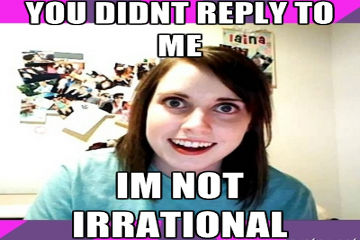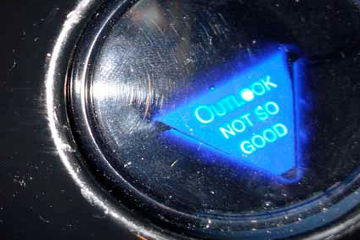What I’ve Learned:
“Transcendental numbers: weird stuff happens when pi and yoga get together.”
I’ve heard mathematicians say that learning math is like peeling an onion. I assume what they mean is that there are outer layers built on more basic ones, with patterns and fundamentals that go all the way to the core.
But all I get out of it is that math will probably make you cry. And if you eat too much of it, no one will want to kiss you.
Take transcendental numbers, for instance. Those might sound like numbers that have turned on, tuned in and dropped out of the number line — possibly to hand out flowers at a local airport — but that’s not exactly true. Technically speaking, transcendental numbers are numbers that aren’t “algebraic”.
(In other words, numbers that have nothing to do with algebra. Lucky bastards. I tried that in junior high school, and they made me repeat a grade.)
Specifically, algebraic numbers are those you can plug into an equation with plain old integers or fractions, and make the result come out to zero. Or, for the protractor-and-pocket-protector crowd, numbers that are roots of finite, non-zero polynomials in one variable with rational coefficients. And gesundheit.
So 4 is algebraic, then, because if you take the equation “3x – 12 = 0” and plug in 4 for “x”, it all works and you get that zero out the other end, like you wanted. Of course, “4” works for a bunch of other equations, as does “9” and “42” and “1/17” and “2,641,835”.
All the everyday plain old numbers we know are algebraic as hell (not an official mathematical term), but it only takes one solvable equation (outside of multiplying by zero to get zero, you sneaky devil, you) to make a number algebraic. It’s easy. What self-respecting numerical concept wouldn’t bother to be algebraic? I ask you.
Well, for three-point-one-four-one-five-nine things, pi.
Pi is weird in a bunch of ways. But one of its oddball properties is that you can’t plug it into any equation containing only integers or fractions (aka, “rational numbers”) and make the thing equal zero. It can’t be done. Smart people have tried, with computers and abacii and everything, and it’s not happening. Pi r stubborn.
That also makes pi a transcendental number. But lest you think it’s some kind of lone wolf — a rogue bad boy who won’t play nice with the other numerical kids — get this: the set of transcendental numbers is, mathematically speaking, uncountably infinite. And if that doesn’t make your Euler shrivel up inside you, then you probably don’t want to hear that we don’t even know which numbers are which.
Oh, some numbers are safe. The rational numbers are all algebraic. But lots of irrational numbers — which, like pi, can’t be written as a ratio of two integers — might be transcendental. Nobody knows. Is there some weirdo pretzeled-up equation that a particular irrational number might fit, making it algebraic?
(Sometimes. Take the square root of 2. It’s not rational; can’t be written as a ratio of two integers. But it nestles nicely into the equation x2 – 2 = 0, so it is algebraic.
But that’s an easy one. Numbers are like Tinder dates — the irrational ones aren’t usually nearly so accommodating.)
A few other (totally irrational) numbers have been outed as transcendental. Like “e”, the base of the natural logarithm. Esoteric weirdos like the Gelfond-Schneider constant, the Fredholm number and the Liouville constant (which really got the transcendental Bingo ball rolling back in the mid-1800s).
But most irrational numbers — which can be “real” like pi, or “complex” (which is to say, half-imaginary) like 2 + 3i, where “i” is the imaginary unit equal to the square root of -1, which isn’t a thing that exists in the actual world of onions and shriveled Eulers and unkissable mathematicians — might be algebraic, or they might be transcendental numbers. Like, is ee transcendental, or just weird as hell? What about pi – e, or pi/e? Today, no one can say. Maybe someday, smart math people will figure out some way to tell for large swaths of these bizarro half-made-up numbers of theirs.
In the meantime, I’ll be huddled over here in the corner. Crying on my onion slices and watching out for irrational transcendental numbers. And I thought eighth-grade algebra was scary.






